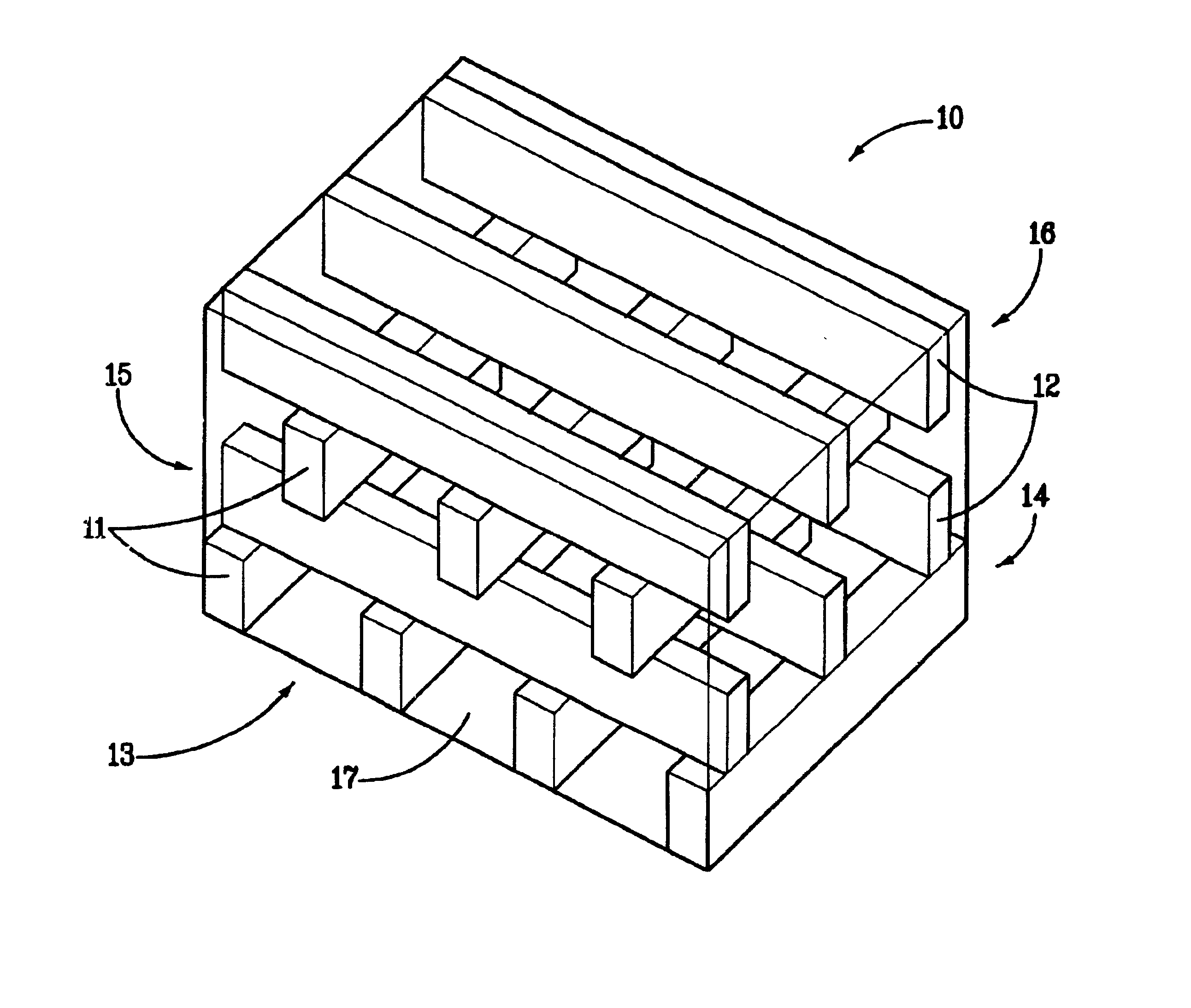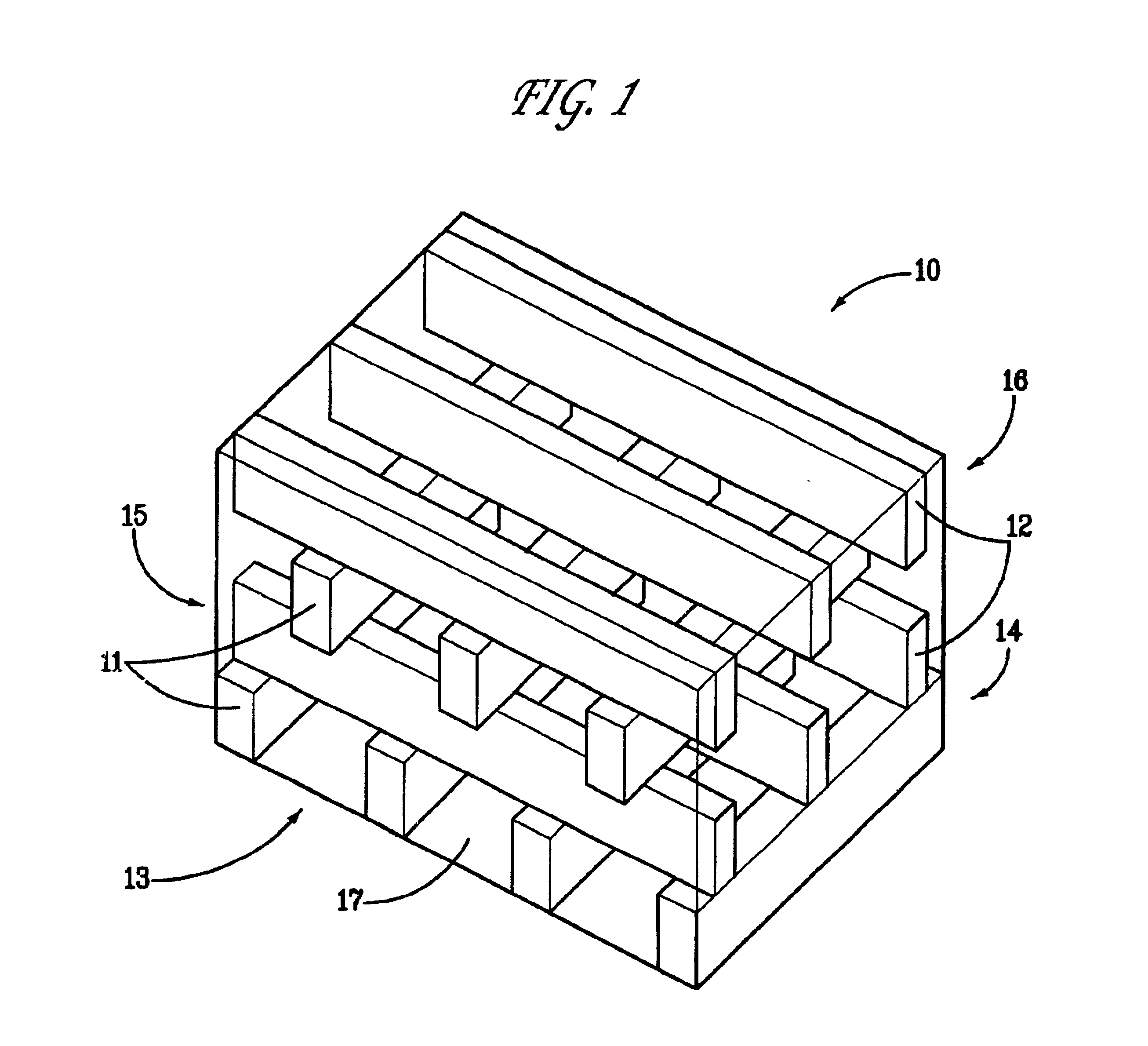Method to fabricate layered material compositions
a technology of layered materials and compositions, applied in the field of photonic lattices, can solve the problems of poor and variable response, poor and practical limitations, and attempts to make this structure have yielded structures with mediocre performance, and achieve uniform growth and optical properties, precise thickness, and planarity. and alignment control
- Summary
- Abstract
- Description
- Claims
- Application Information
AI Technical Summary
Benefits of technology
Problems solved by technology
Method used
Image
Examples
Embodiment Construction
Again, although the fabrication of photonic lattices will be emphasized in the description below, this is being done for convenience. A photonic lattice is simply a specific example of a layered material composition. There is no intent to limit the scope of the present invention thereby, said limit to be defined by the appended claims in light of the disclosure and figures.
A particularly simple example of a photonic lattice is that shown in FIG. 1. This type of structure is often called a Lincoln-Log structure--the reason being that such a structure 10 looks like a carefully stacked pile of logs 11 and 12. More properly, the structure 10 decomposes into a stack of structured layers 13, 14, 15, and 16. The "logs" 11 and 12 consist essentially of a first optical material, have a roughly rectangular cross-section, and are substantially parallel within a given structured layer. As shown here, the logs can have different shapes and sizes depending on where in the structure they appear. T...
PUM
 Login to View More
Login to View More Abstract
Description
Claims
Application Information
 Login to View More
Login to View More - R&D
- Intellectual Property
- Life Sciences
- Materials
- Tech Scout
- Unparalleled Data Quality
- Higher Quality Content
- 60% Fewer Hallucinations
Browse by: Latest US Patents, China's latest patents, Technical Efficacy Thesaurus, Application Domain, Technology Topic, Popular Technical Reports.
© 2025 PatSnap. All rights reserved.Legal|Privacy policy|Modern Slavery Act Transparency Statement|Sitemap|About US| Contact US: help@patsnap.com



